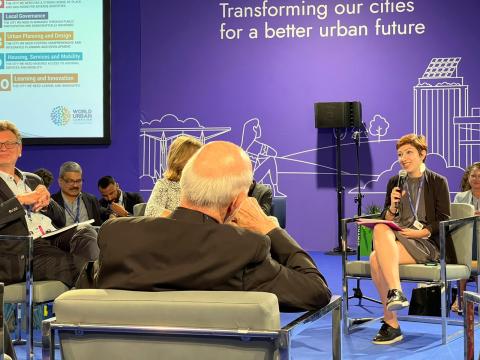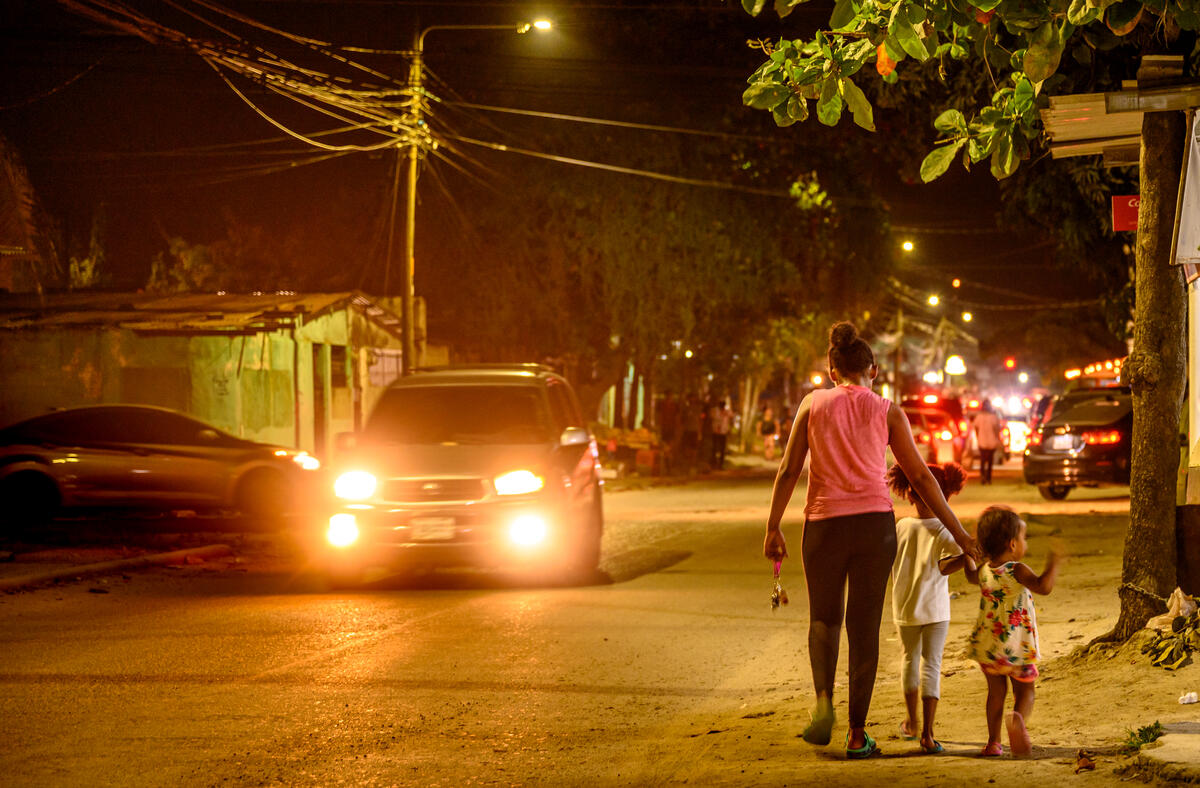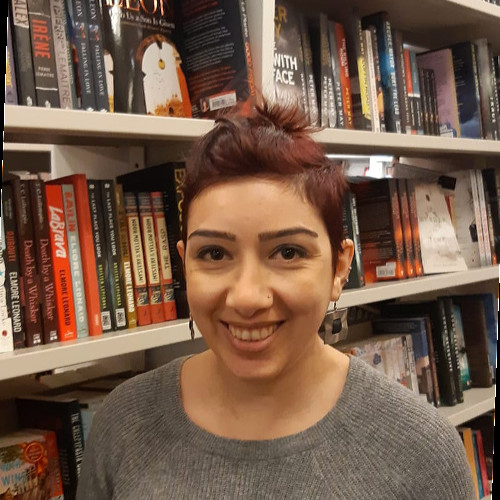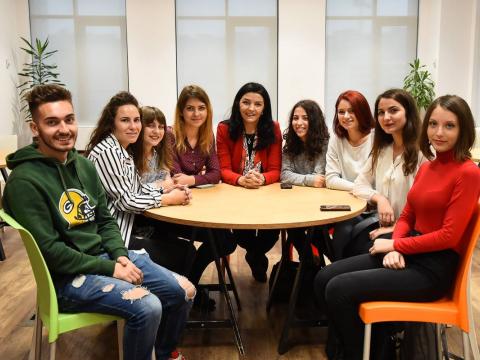
World Urban Forum only worthwhile if children are central
Urban expert and new mum Aline Rahbany asks why children were missing from the World Urban Forum's (WUF11) Children and Youth Assembly.
15 July, 2022
In a decade attending the UN-Habitat's bi-annual World Urban Forums, this was my first as a mother. My little boy, Andreas, was born and will likely continue to live in an urban environment. His city, Toronto, is a properly planned city, that has wide sidewalks the largest of which can fit three moms pushing their strollers next to each other. It is a city that is full of parks and inclusive public spaces and where essential services are within minutes of walking or public transit. Toronto’s urban planning is, to a great extent, child-responsive. Sadly, this cannot be said of the city where I am from, Beirut, or of many of the cities where the majority of the world’s children live.
This is why it has been important for World Vision to engage in what was the 11th World Urban Forum (WUF11) as well as in other global networks and processes that could influence the urban agenda and discourse to be more inclusive of children, especially the most vulnerable and marginalised living in urban slums, informal settlements and fragile cities.

Steps forward
As a child-focused organisation participating in WUF11, there was much for us to celebrate. The number of events focusing on children in urban areas has significantly increased in comparison to previous forums. The content of most panel discussions and events discussing urban children’s wellbeing was substantive.
Tools and guidance documents were released, new research results were disseminated, and key child-focused organisations were represented at the forum, a clear sign of them stepping up their urban game. The Global Alliance Cities for Children that was launched at the last forum is still going strong with an increased membership and plans for establishing local chapters at city and country levels. World Vision is a steering committee member in this alliance.
Steps back
UN-Habitat’s own Children and Youth Assembly at this 11th forum was, however, disappointing. While children are there in the title of the event; they were not present, represented or even mentioned during the activities planned for this assembly.

Child participation in international forums can be challenging, though not impossible (we’ve done it before! See here and here). There are serious safeguarding policies and standards that child-focused organisations – or any other organisation for that matter – need to adhere to ensure children are protected before, during and after the event, and have a safe and meaningful participation. Children need to be properly briefed and given moral support if attending an international conference, and perhaps even travelling overseas, is new to them. Youth participation was not great at WUF11 either with so many young people, especially from African countries, having their visas denied.
While it might have been difficult to bring children in person to the children and youth assembly, the least that could have been done was to try and include them virtually or through pre-recorded videos. But we need to make sure that, if this is done, we are really hearing from the most marginalised and not just those who have access to technology and internet connection. While COVID-19 showed how technology can help more of the world dialogue digitally, the economic fallout of that pandemic actually widened the digital divide between those who have access to digital technology and those who don’t. Children living in the poorest urban neighbourhoods, informal settlements and slums, and rapidly urbanising displacement camps are most often counted among the digital ‘have-nots’.
Spaces and tools for children
Over one billion people live in slums today. Among those, approximately 350 to 500 million are children. According to the World Health Organization (WHO), a number of factors combine to make children living in slums more susceptible to diseases and early death. Those factors are poverty, violence, discrimination, overcrowding, pollution and lack of water and sanitation. Children in slums are more prone to go hungry, become malnourished, drop out of school at an early age to support their families in earning income and are often denied essential health care. Urban inequalities are disproportionately more harmful to children living in slums who are put at a disadvantage from an early age; this can also have lifelong health impacts.

But children are not helpless victims. Children, including those living in urban slums and informal settlements, understand the issues and complexity of the challenges they are faced with and are passionate about change. When given the right opportunities, tools and spaces and the enabling environment, children’s engagement can have a transformative impact on their neighbourhoods and cities at large. World Vision has a genuine commitment to child participation. Practically that means creating the opportunities for children’s experiences to be reflected in assessments and the design of policies and programmes. Also, they must be able to participate meaningfully in the implementation, monitoring and evaluation of those.
World Vision believes that every child and youth should grow up in a fair, just, and socially cohesive city; cared for and protected from violence; with equal opportunity to grow, learn, and contribute to shaping future cities. Children and youth must be recognised as key resources and agents of change, and be provided opportunities to meaningfully engage in local, national, regional, and global decision-making processes; including in the planning and design of the cities where they live. Children and youth can drive social, political, technological, and economic transformation in cities, as knowledge bearers of their local contexts, and as such should be considered more than mere beneficiaries.They should be acknowledged among key urban actors and included in partnerships formed to shape city development at the policy and programming levels.
Six priorities
To achieve the 2030 Agenda and its Leave No One Behind value, based on our extensive experience working with children, youth and families and partners in both fragile and stable urban contexts, World Vision recommends that local and national governments, donors, and civil society organisations work together in urban contexts to:
- Protect the most vulnerable children, especially from abuse and exploitation;
- Improve access to equitable, quality, and ethically provided urban public services, safe spaces, and a healthy, stable built environment where children and youth can live, learn, develop, and thrive;
- Based on strong and continuous context analysis, design urban interventions that promote social cohesion among city residents to establish collective actions, address social tensions and drivers of fragility, build bridges between diverse groups sharing the same geographical boundaries, and create more inclusive cities;
- Enhance knowledge building and support participatory urban governance by promoting the inclusion of marginalised and vulnerable voices in decision-making processes, particularly new migrants, the displaced and refugees, undocumented ‘invisible’ urban populations, and especially children and youth;
- Invest into collaboration to establish multi-sectoral and multi-stakeholder partnerships for citywide impact; and
- Contribute to the operationalisation of the humanitarian-development-peace nexus at local, citywide and national levels.
Sessions where children spoke
Those recommendations are from the World Vision’s Position Paper on 2030 Agenda for Sustainable Urban Development that was launched at WUF11 during a Special Session on “The City We Now”, UN-Habitat’s World Urban Campaign where I participated as a speaker. Our case studies on operationalising the triple nexus in fragile cities in Iraq, Lebanon and Central America were launched in another event we organised with our partners Plan International, Slum Dwellers International and Dreamtown where we hosted an intergenerational dialogue on urban fragility and resilience.
For the dialogue we did bring the recorded voices of children and youth, and thankfully two youth from urban slums in Africa were able to attend in person and via Zoom. Boys and girls from around the world shared what is it like to live in a fragile city, what solutions they have for the problems they face, how they are participating in the change they want to see and what commitments they have made to work to see the changes implemented.
Before I travelled to Poland, I was so anxious about leaving my baby behind for the first time since he was born. An urban enthusiast friend and colleague who was not participating this time around commented, “I hope it is worth it”; significantly increasing my anxiety.
On my return home, I knew it was worth it. Not only had I and my colleagues brought the missing voices of children to this forum, we determined to do all we can so the next WUF prioritise children’s presence and input, especially the most marginalised. I came back from this forum revitalised from conversations I had with like-minded people in organisations that share the same goals and motivations. I returned home excited and energised about the plans World Vision and partners have developed to work for the wellbeing of children in urban settings everywhere; urban children like my Andreas.
To learn more about World Vision’s Urban work click here. To read about World Vision’s attendance at WUF11 click here.
Aline Rahbany (pictured speaking at WUF11 in the main image), is World Vision’s Technical Director, Urban Programming leading the organisation’s urban work globally.


